This is blog post is co-written by myself and Clare Revera. She is a consultant and trainer who used work at Out to Learn Willow. This company specialises in training adults and children in the traditional craft of willow weaving, using dried and living willow. They design and build beautiful structures and sculptures to enhance school grounds, gardens and community areas. The website also contains information about maintaining structures which is an equally important consideration to factor into your school year.
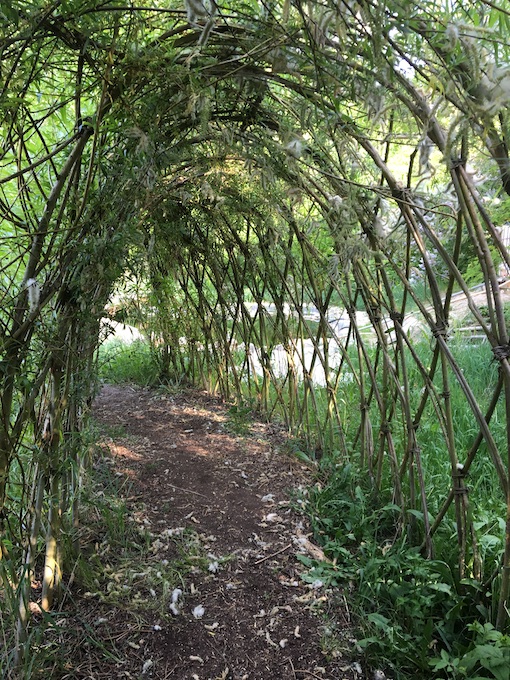
So why does every school need willow structures? Clare has summarised her reasons below:
1. Benefits for wildlife
Willow structures are created mainly from native British varieties which have a wide range of benefits. As a habitat it is superb for wildlife sustaining over 200 different types of insect – which has a knock on effect of feeding many species of birds . Willow is a vital source of nectar early in the season as it flowers early. It is also one of the best carbon capturing native trees we have in the UK.
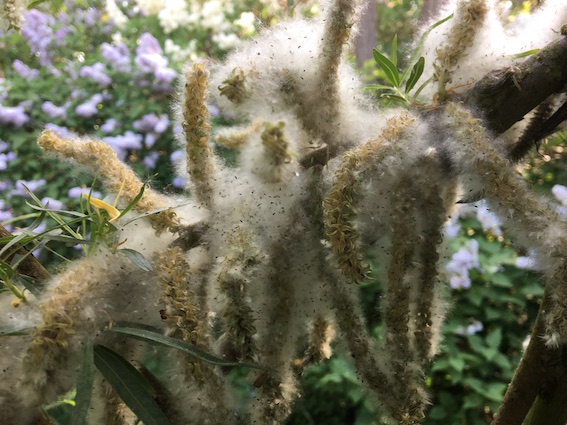
2. Benefits for children
Willow weaving is an ancient traditional rural craft which must be preserved. If the children are fully involved in the construction of your structure then they have the opportunity to learn the rudiments of the craft such as using willow to make patterns and learning weaving strokes which are strong and structural. Many schools who work with us become hooked and also either run follow up days for pupils to learn further basketry skills or send teachers on one of our courses..
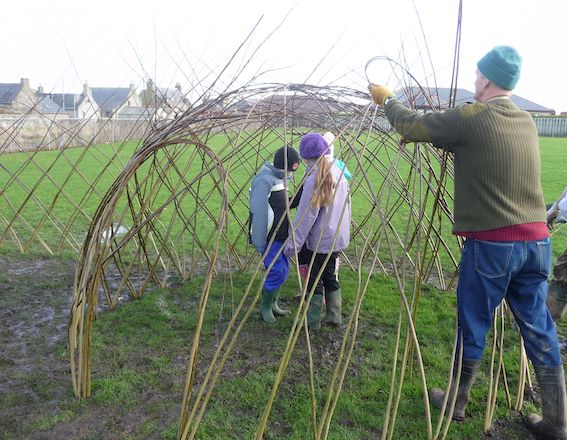
Willow is a very forgiving and flexible (in both senses of the word) material for children to work with. Willow weaving is a completely kinaesthetic learning experience. You simply have to do it to learn it. Many children who don’t achieve at much else are extremely adept when working outdoors using practical skills. It is marvellous to see these children gaining success. And the benefits of working outdoors for children – freedom, space, fresh air, exercise, motivation, enthusiasm, learning to respect the environment, practical skill development…to name a few.

3. Supports free play outdoors
Children who are involved in the process of construction are also more likely to use the structure – In the school where I taught, the willow dome at the school was used as a bomb shelter, an igloo, a woodland princesses palace and a bird hide, to name a very few, in freely chosen play. And that was just in one week! These structures are great for developing imagination!
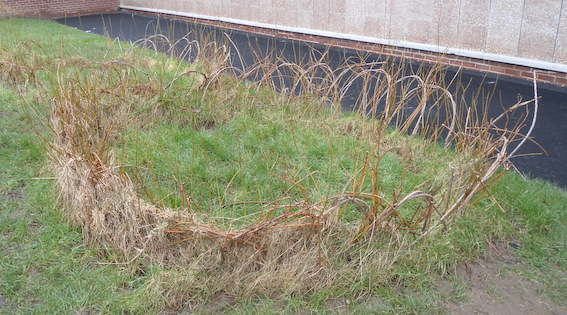
4. A place for shade and shelter
In the summer willow structures provide shady areas to sit and relax especially if children are provided with something to sit/lie on e.g. portable seating mats.
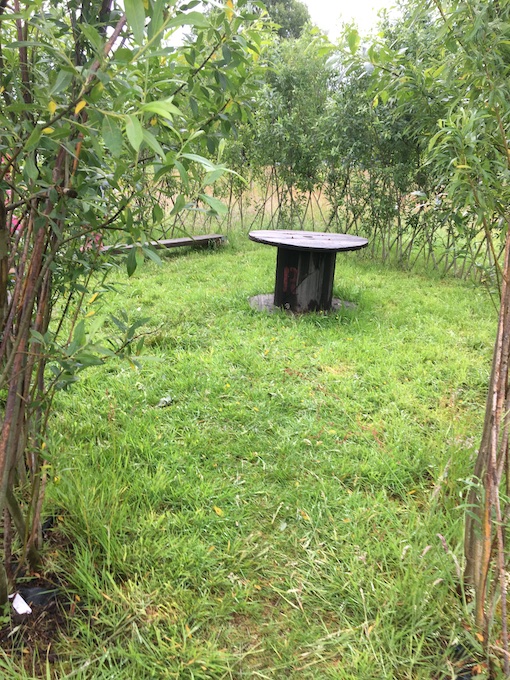
5. Developing environmental stewardship
Structures also need maintaining on an annual basis and provide an interesting task for members of eco groups, gardening clubs or a class that takes on this responsibility. It is straightforward and enjoyable to prune willow, providing opportunities for tool use: loppers and secateurs.
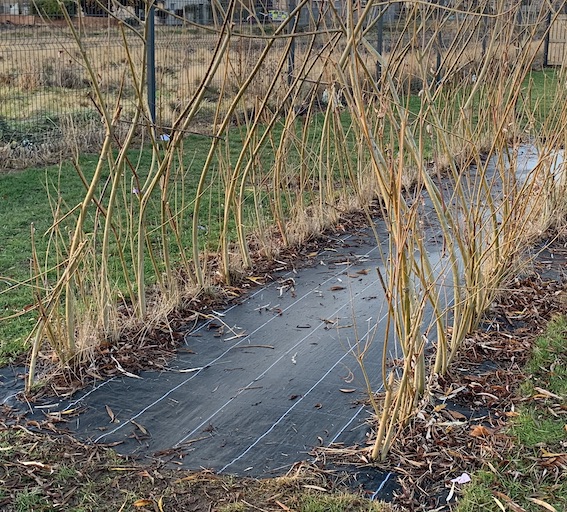
6. Benefits to teachers
We have found the most fantastic enthusiasm and excitement amongst teachers for working with willow and have now trained thousands in various aspects of willow weaving. Willow weaving is incredibly therapeutic, just what you need after the bustle of the classroom. Many schools locally have now planted beautifully coloured basketry willow beds in their schools so that they have an entirely self sustaining and cheap resource which just keeps on producing year after year. And the benefits of working outdoors for teachers – freedom, space, fresh air, exercise, motivation, enthusiasm, learning to respect the environment, practical skill development.
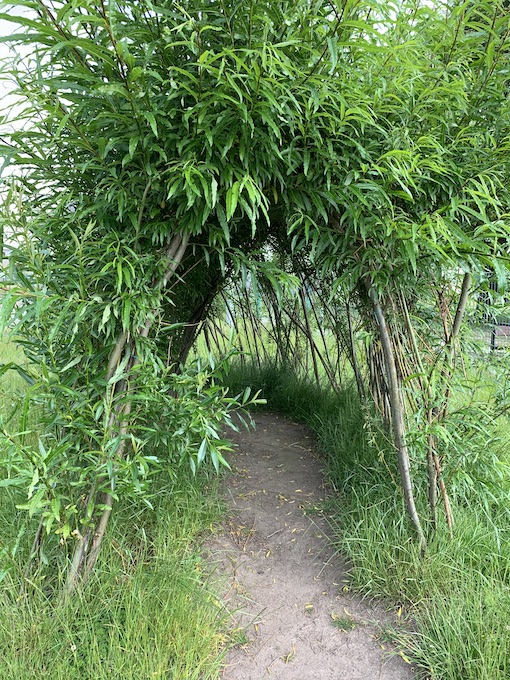
7. Benefits to your school
Willow structures are extremely beautiful to look at. They enhance outdoor areas. Your school grounds send important messages to both pupils and parents. It is probably the first place visitors see – your shop window. School grounds are just as important as the inside of the school and deserve as much care and thought and time. Willow can be used to section your grounds, giving a feeling of greater space, the provision of hidden spaces and natural gathering spaces.

Finally, thank you to Peter Kyburz who sent in the link to his willow dome structure planted in a school in Switzerland. The YouTube video is short, sweet and a lovely souvenir of the planting event! Do remember though, that you can adapt the size of a willow structure to match the intended users. So go for mini structures with little children – less work and less height issues around building and maintaining.
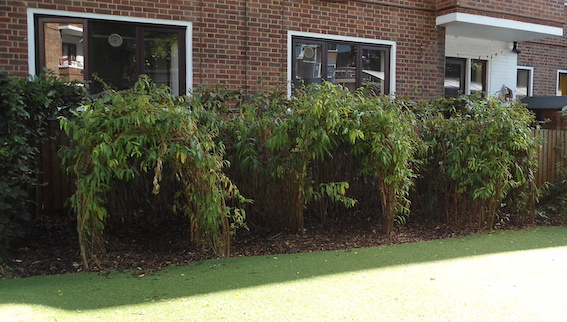
If you need a willow worker to visit your school, then there are many specialists throughout the UK that can assist. For Scottish people, have a look on the Willow Scotland website for a local worker. Remember that if you live outwith the UK you may need to find an alternative native species for your natural structures.
For information about the play value and cultural uses of willow, please check out the Papyrus Project – it has lots of information and advice about a range of plants.
This blog post was originally published in March 2010. Since the original publication of this blog post, Clare now has her own business, Welsh Baskets. She is still available to run willow training and school grounds courses.




















There are many types of willows that grow around here as well. We already have plans to grow bamboo the use as a natural construction material. Maybe we need a little willow too!
I love those structures. I have never seen anything like that here in California. Thanks for sharing such a neat idea.
We would LOVE to develop willow structures in our playgrounds but it is considered an environmental pest in Australia and we arn’t allowed to grow it. We are trying to find something that can be used in the same way that is native to Australia. Any one know of any alternitives?
Hello Everyone
Thanks for your comments. I’m learning a lot here! Generally willow likes damp places like river banks, etc. So I’m fascinated that it’s a pest in Australia. However I bet there’s a native tree that would do instead.
We’re limited in Scotland – grape vine and sunflowers don’t like our cool climate so making dens from these plants doesn’t work as well.
Best wishes
Juliet
We (parents and kids) planted a big willow house this winter on the schoolground. If you want to see it “grow”: http://www.youtube.com/watch?v=9UNpbAZHj2k
Now we’re waiting for it to sprout… 🙂
Best regards
Peter
This is a super video. Thanks for sending the link Peter. I’ll add it to my post!
just come across this blog and thought that folks might like to know about our work.
We are Steve & Simone known as Willowpool Designs and have been working with schools to create willow features for many years! Some of the companies mentioned in the feature are direct copies of our work and have even used our images (apparently unwittingly) to promote themselves.
We have worked with willow for over 30 years and have created willow structures both in the UK and overseas. Many primary schools in the UK now have willow features. the new season starts in November.
checkout our website at http://www.willowpooldesigns.co.uk